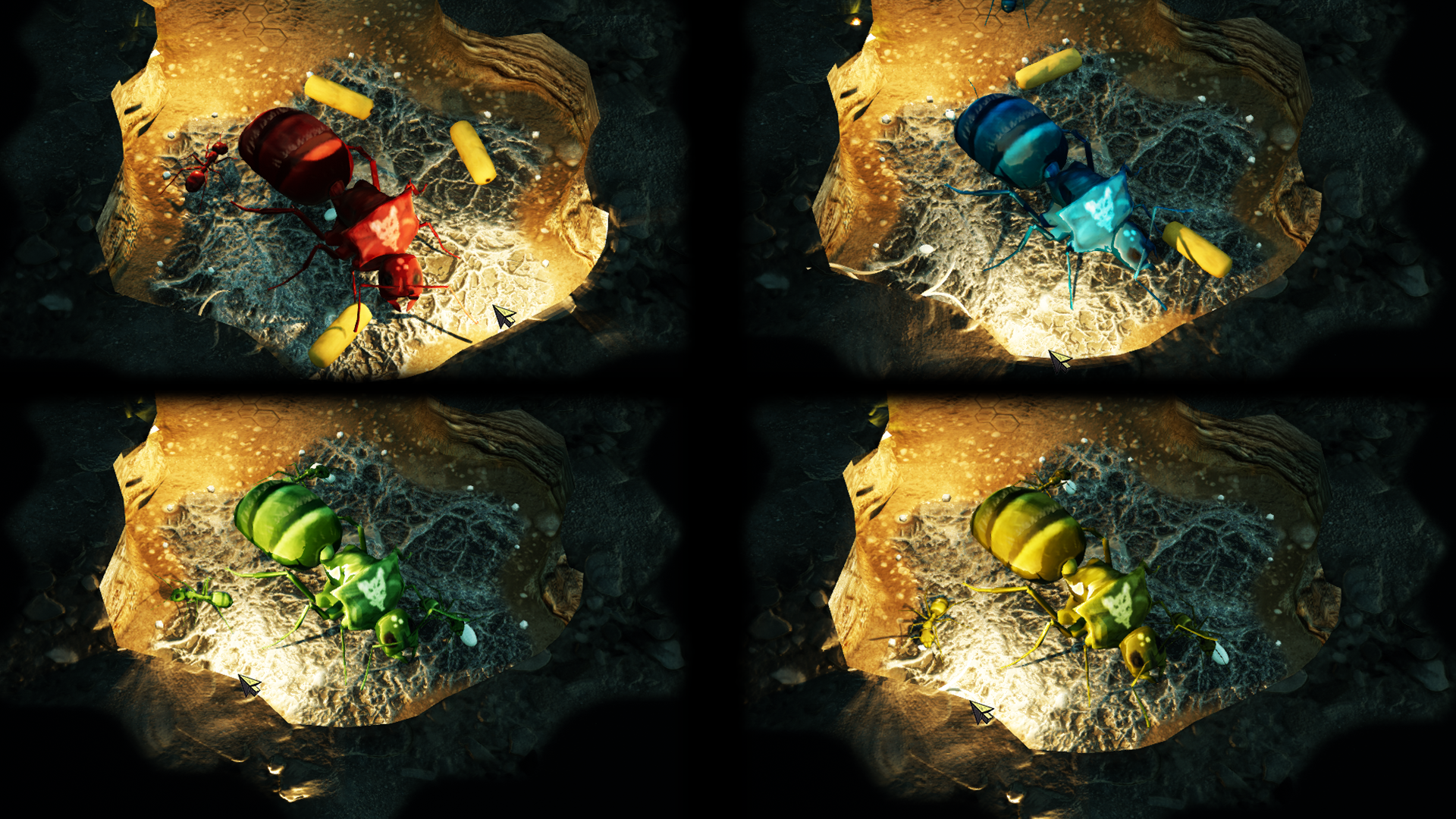Mike said:
It's one of the features that departs from reality, but it's often requested. You'll be able to choose from several natural shades to your preference!
Does that mean you can choose a primary and a secondary (shader) color, like in Homeworld? Or do you get a preset pattern like 'head color of your choice (i.e. purple), thorax with colored elements (here purple), abdomen with colored elements (here purple)?
Also note that there's a broad variety of ant abdomen patterns in nature, like colored stripes, colored hair (Camponotus chilensis has bright yellow hair on their abdomens, it looks hilarious) and even ladybug-like points.
Mike said:
Also, you have some very pretty ants. Amazing that you can tell individuals apart.
Well, I can tell apart some of them due to size (the medium worker is quite a monstrosity compared to the others), thorax color (some are very red while others are completely black) and behavior (some of them are really aggressive, others very shy).
It's gonna be difficult though when there will be several hundreds (and these ants can grow into the tenthousands!).




